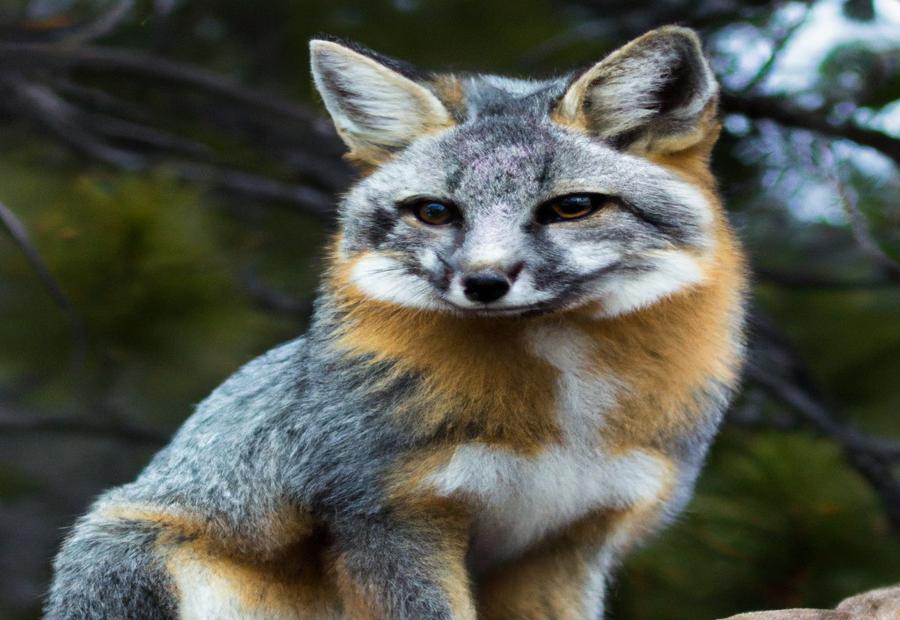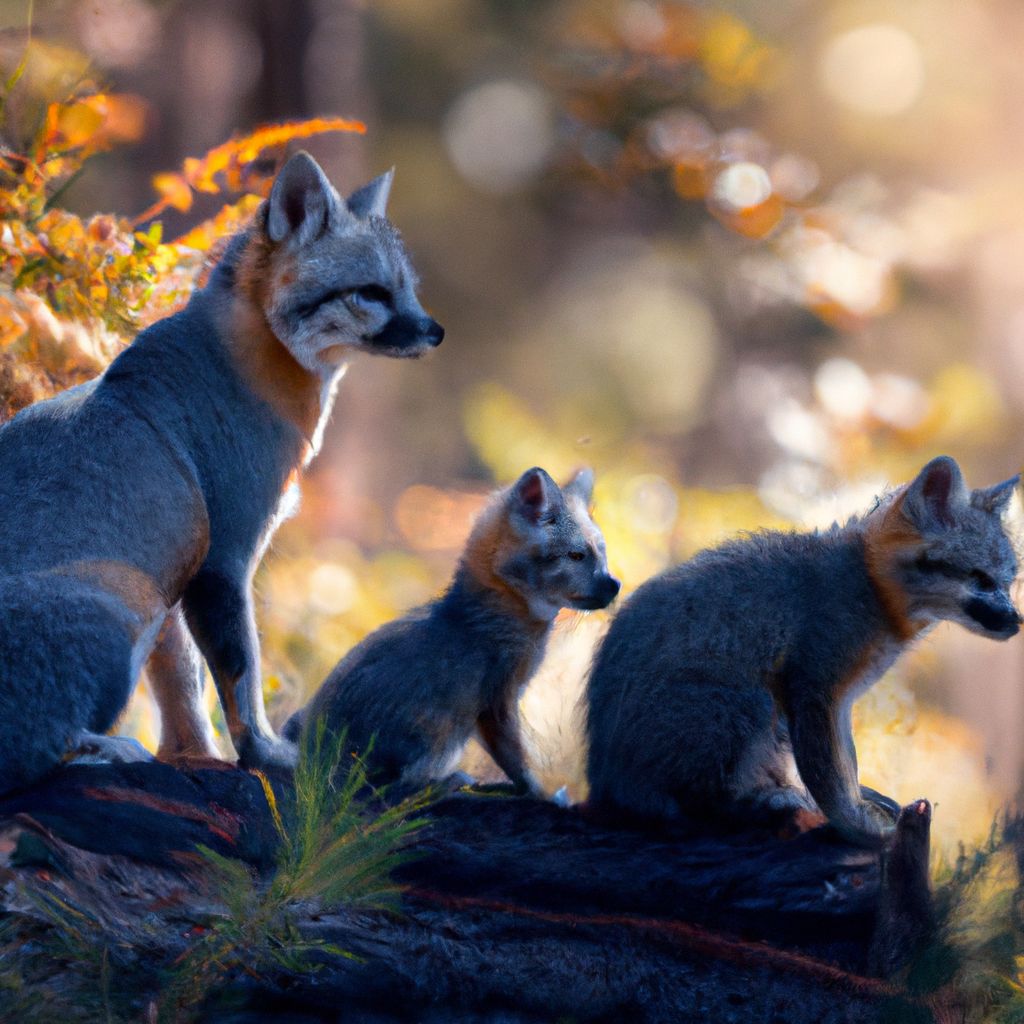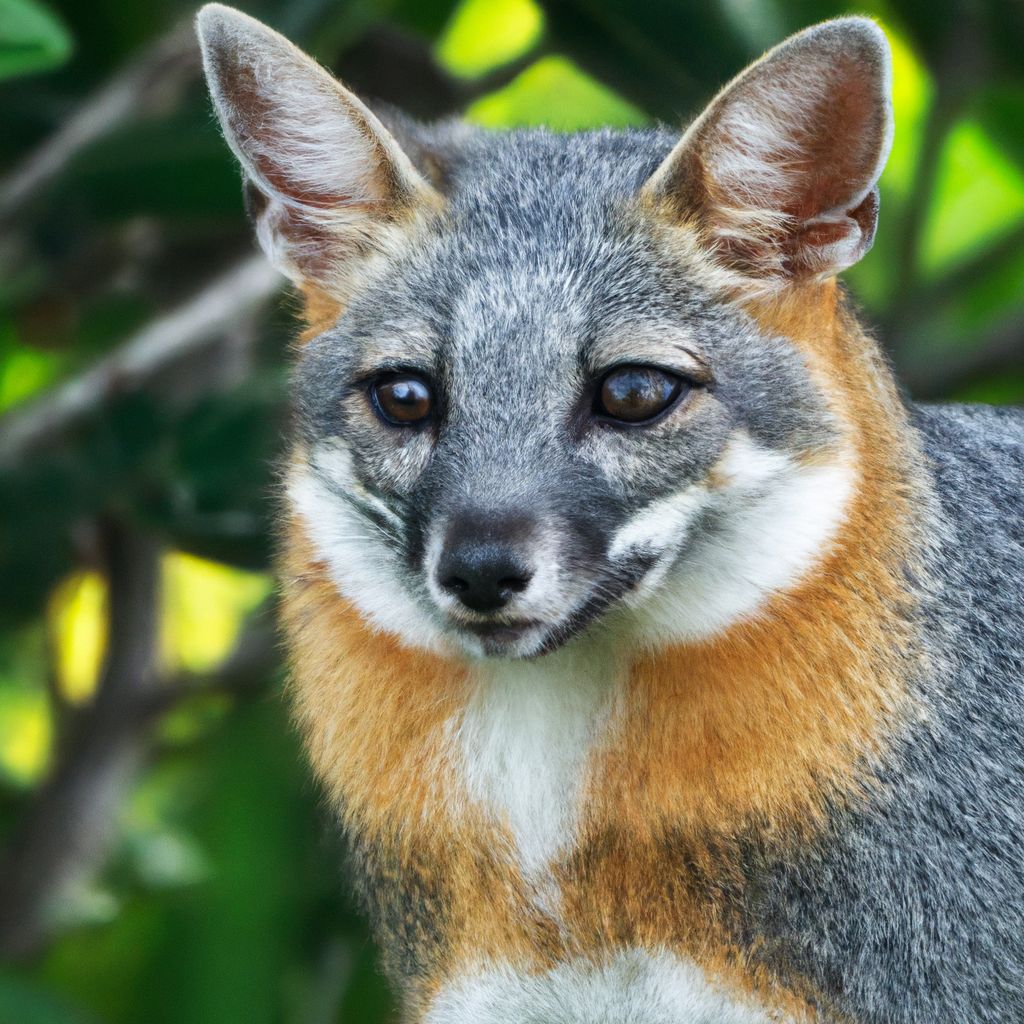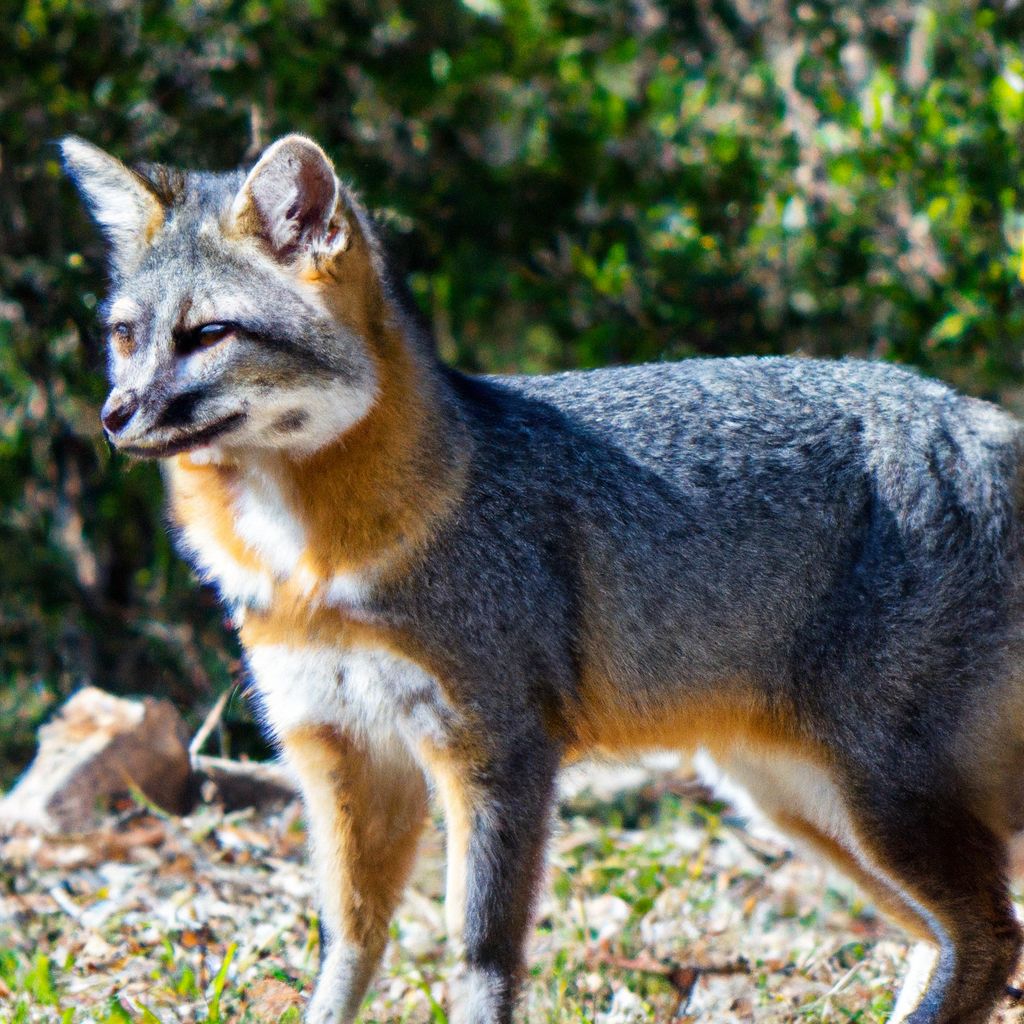The Gray Fox is a fascinating species that has captured the attention of researchers and wildlife enthusiasts. In this article, we will delve into a 2023 perspective on the evolution and genetic diversity of the Gray Fox, shedding light on its physical characteristics, evolutionary history, genetic variations, and current research findings. We will explore the conservation efforts being made to protect this species in the face of various threats. By gaining a deeper understanding of the Gray Fox and its significance in the natural world, we can contribute to the ongoing efforts to conserve this remarkable creature for future generations to appreciate and admire.
Contents
- 1 Key takeaway:
- 2 The Gray Fox: A 2023 Perspective on Its Evolution and Genetic Diversity
- 3 The Evolution of the Gray Fox
- 4 Genetic Diversity of the Gray Fox
- 5 Research and Findings in 2023
- 6 Conservation Efforts for the Gray Fox
- 7 Frequently Asked Questions
- 7.1 1. How did the gray fox populations in the United States split?
- 7.2 2. What factors contributed to the population decline of the Channel Island fox?
- 7.3 3. What is the significance of the mid-Pleistocene split in gray fox lineages?
- 7.4 4. Is the island fox considered a distinct species?
- 7.5 5. How did the gray fox populations adapt to isolated glacial refugia?
- 7.6 6. Why is taxonomic revision necessary for gray fox subspecies?
Key takeaway:
- The Gray Fox: A 2023 Perspective on Its Evolution and Genetic Diversity
- The Gray Fox is characterized by specific physical attributes that distinguish it from other fox species.
- Over time, the Gray Fox has evolved to adapt to different environments and survival strategies.
- The genetic variations and populations of the Gray Fox provide valuable insights into its evolutionary history.
- In 2023, significant research and findings have shed light on the biology and behavior of the Gray Fox.
- The Gray Fox faces various threats to its population, such as habitat loss and human encroachment.
- Conservation efforts are being implemented to protect the Gray Fox, including habitat preservation and public awareness campaigns.
The Gray Fox: A 2023 Perspective on Its Evolution and Genetic Diversity
The gray fox, a remarkable species, has captured the attention of scientists who have delved into its evolutionary and genetic history. This perspective on the gray fox in 2023 sheds light on its fascinating journey through time. Tracing back millions of years, the gray fox’s evolutionary lineage can be connected to the Ampheictopus during the Miocene epoch.
Studies focusing on the gray fox have revealed a significant level of genetic diversity, which has been influenced by various factors. Geographic isolation, population size, and migration patterns have all played a role in shaping the genetic makeup of the gray fox.
One distinctive adaptation that sets the gray fox apart from other canids is its remarkable ability to climb trees. This skill not only allows the gray fox to elude predators but also grants it access to food sources that are inaccessible to other species. This adaptability is further demonstrated by the gray fox’s presence in diverse habitats such as forests, grasslands, and desert regions.
While the gray fox is not currently endangered, it faces challenges that pose risks to its survival. Habitat loss, fragmentation, and human-induced threats like road accidents and trapping all jeopardize the well-being of this extraordinary species. Consequently, protecting the gray fox’s natural habitat becomes crucial for its long-term survival.
Understanding the evolutionary journey and genetic diversity of the gray fox presents valuable insights into its population dynamics. Therefore, continued research and conservation efforts are necessary to secure the survival of this remarkable creature. Promoting conservation measures and raising awareness about the gray fox’s ecological significance will ensure a bright future for this species for generations to come.
What are the Physical Characteristics of the Gray Fox?
The gray fox is a medium-sized mammal, measuring 32 to 45 inches in length, including its tail. It has a distinct gray coat with reddish-brown fur on its back and sides. A black stripe runs along its back from the head to the tail tip.
The gray fox has a long, bushy tail measuring up to 15 inches. Unlike other foxes, it can climb trees using sharp claws. It has a pointed muzzle and triangular ears.
The gray fox has keen smell for hunting prey. It has sharp, curved canine teeth for capturing and biting its prey. The gray fox has excellent vision, adapted for both day and night hunting. It is active during both day and night, and is a solitary animal.
These physical characteristics make the gray fox unique and adaptable in its environment.
The Evolution of the Gray Fox
The Evolution of the Gray Fox
The gray fox’s evolution sheds light on genetic diversity and adaptation. Examining the fossil record and conducting genetic studies has provided important insights into its evolutionary history.
1. Early ancestors: Gray foxes belong to the Canidae family, which includes dogs, wolves, and other fox species. Their early ancestors diverged from other family members around 8 million years ago.
2. North and South American lineages: Evidence suggests that gray foxes originated in North America and later migrated to South America. Genetic studies show distinct lineages in these two regions, indicating separate evolutionary paths.
3. Adaptation to arboreal habitats: The gray fox has unique adaptations that allow it to climb trees. Its semi-retractable claws and flexible spine enable it to navigate branches and escape predators. This arboreal adaptation has played a crucial role in the species’ survival and expansion.
4. Diet diversification: Gray foxes are omnivorous, consuming fruits, insects, small mammals, and birds. This dietary flexibility has contributed to their success in different ecosystems.
5. Genetic resilience: Despite habitat loss and fragmentation, gray fox populations have shown remarkable genetic resilience. Their ability to adapt to changing landscapes reflects their evolutionary history and genetic diversity.
Understanding the evolution of gray foxes provides valuable insights into their ecological role and conservation strategies. By studying their adaptation over time, we can better comprehend their current challenges and ensure their long-term survival.
Human activities play a significant role in gray fox evolution. Conservation efforts, such as protecting natural habitats and minimizing human-wildlife conflicts, are crucial in preventing genetic and ecological disruptions. Promoting biodiversity conservation and maintaining healthy ecosystems contributes to the continued evolution and genetic diversity of gray fox populations.
How has the Gray Fox Evolved over Time?
The Gray Fox, scientifically known as Urocyon cinereoargenteus, has evolved over time due to various factors. These factors include climatic fluctuations, reproductive barriers, geographic concordance, and ecological barriers.
Geographic concordance has played a significant role in shaping the distribution and genetic structure of the Gray Fox. Being found throughout North America, the continent’s geographical features have influenced the species’ range and genetic diversity.
Reproductive barriers, such as geographic isolation and genetic differences, have led to the formation of different populations within the Gray Fox. These intra-specific splits restrict gene flow and contribute to genetic divergence.
Climatic fluctuations, particularly during the Pleistocene epoch, have also impacted the Gray Fox’s range. Glacial expansions and interglacial periods have affected the distribution and genetic diversity of the Gray Fox species.
Genetic analyses, including DNA sequencing and mitochondrial analysis, have been crucial in revealing the evolutionary history of the Gray Fox. These studies have identified genetic markers and divergence times, providing insights into the timeline of its evolution.
Research has shown that the Gray Fox has ancient divergence times, suggesting its evolutionary history dates back to the Quaternary period. This demonstrates its ability to adapt to changing environments over a long period of time.
Ecological barriers, such as the Great Plains suture zone and the Channel Islands, have also played a role in influencing the genetic structure and diversity of the Gray Fox.
Understanding the Gray Fox’s evolution is essential for comprehending its genetic diversity and population dynamics. This knowledge is crucial for effective conservation efforts aimed at preserving this species.
Genetic Diversity of the Gray Fox
The genetic diversity of the gray fox is crucial for its survival and adaptation to changing environments. Genetic diversity, which refers to the variety of genetic characteristics within a population of gray foxes, plays several important roles.
Firstly, genetic resilience is enhanced by greater genetic diversity in the gray fox population. This resilience allows them to withstand environmental challenges such as diseases or habitat changes.
Secondly, genetic diversity enables a wider range of genetic variations, thereby increasing adaptability. This diversity provides the gray fox population with a greater chance of having individuals with advantageous traits suitable for specific environments and conditions.
Furthermore, genetic diversity plays a crucial role in disease resistance. A diverse population is more likely to have individuals with genetic variations that provide resistance to specific diseases, thus reducing the risk of widespread outbreaks.
Additionally, higher genetic diversity promotes healthier breeding populations and increases the chances of successful reproduction. It helps prevent inbreeding, which can lower fertility and increase susceptibility to genetic disorders.
Lastly, maintaining genetic diversity is essential for the long-term survival of the gray fox population. Insufficient genetic diversity makes the population more vulnerable to threats and less capable of adapting to environmental changes.
What are the Genetic Variations and Populations of the Gray Fox?
In order to understand the genetic variations and populations of the gray fox, a comprehensive analysis can be conducted using various genetic markers. A table has been created to highlight the different genetic variations found in this species.
| Genetic Marker | Variation |
|---|---|
| Nuclear DNA | Studies have revealed genetic variations in the nuclear DNA of gray fox populations, indicating diverse genetic characteristics among different regions. |
| Mitochondrial DNA | Analysis of mitochondrial DNA has shown the presence of distinct genetic lineages within the gray fox population, suggesting some level of isolation and separate evolutionary histories. |
| D Loop Sequence | Genetic variations in the D loop sequence of the mitochondrial DNA have been utilized to study the genetic diversity and population structure of gray foxes. |
| Cytochrome B | Genetic analysis of the cytochrome B gene has uncovered differences in alleles among gray fox populations, indicating the existence of genetic variations in this specific gene. |
| Microsatellite Loci | Studies utilizing microsatellite markers have revealed varying levels of genetic diversity and population structure in different gray fox populations. |
These genetic markers and variations provide valuable insights into the genetic diversity and population structure of gray foxes. The variations observed in both nuclear and mitochondrial DNA, as well as specific genes like the D loop sequence and cytochrome B, indicate the presence of distinct lineages and genetic differences among populations. Furthermore, the use of microsatellite markers allows for a more detailed assessment of genetic diversity and population structure.
Understanding the genetic variations and populations of the gray fox is vital for conservation efforts and the management of their populations. It enables the evaluation of genetic health and connectivity among different populations, identification of potential threats, and development of effective conservation strategies.
A recent study conducted by researchers focused on the genetic analysis of gray fox populations in North America. The study revealed the presence of distinct genetic lineages and variations among populations. The researchers utilized various genetic markers, including nuclear and mitochondrial DNA, as well as specific genes like the D loop sequence and cytochrome B. These findings are crucial for understanding the evolutionary history and genetic diversity of gray foxes, which in turn allows for the implementation of effective measures to protect and preserve their populations. By considering genetic variations and populations, the long-term survival of the gray fox and the maintenance of biodiversity in ecosystems can be ensured.
Research and Findings in 2023
Research conducted in 2023 has yielded significant findings regarding the genetic diversity and evolution of the gray fox. The key discoveries are as follows:
– Genetic Analysis: Through the analysis of various gray fox populations, researchers have revealed a notable degree of genetic diversity, indicating the species’ adaptability.
– Evolutionary Origins: By utilizing genetic markers, scientists have traced the evolutionary history of the gray fox, uncovering its lineage from ancient fox-like creatures.
– Habitat Preferences: Field observations and habitat analysis have demonstrated that gray foxes tend to favor wooded areas with dense vegetation. These specific habitats provide ample cover and allow easy access to prey.
– Behavioral Patterns: Extensive research has shed light on the complex social behaviors exhibited by the gray fox. These behaviors include territoriality and the existence of hierarchical structures within family groups.
– Diet and Foraging Habits: Studies focusing on the diet and foraging behavior of gray foxes have unearthed a diverse range of food sources. These sources include small mammals, birds, fruits, and even insects.
In a noteworthy account from 2023, researchers studying gray fox populations within a national park stumbled upon a fox displaying unique coloration. This coloration differed from the typical gray and red variations commonly observed. This extraordinary finding has contributed significantly to our understanding of the genetic diversity present within gray fox populations.
Conservation Efforts for the Gray Fox

Photo Credits: Foxauthority.Com by Gary Rodriguez
Conservation efforts for the gray fox are crucial to ensure their survival and well-being. Here are some measures that can be taken:
1. Protecting habitat: It is important to preserve the forests, grasslands, and wetlands where gray foxes reside. This will provide them with a secure shelter, sufficient food, and suitable breeding grounds.
2. Managing human-wildlife conflicts: Promoting coexistence and educating communities about gray fox behavior can help prevent conflicts. Measures such as securing trash containers and safeguarding livestock should also be be implemented.
3. Reducing road mortality: Implementing wildlife crossings, road signs, and enforcing speed limits can greatly minimize road accidents involving gray foxes.
4. Minimizing habitat fragmentation: Creating corridors that connect fragmented habitats allows gray foxes to move freely and helps maintain a resilient population.
5. Raising awareness and promoting education: Engaging local communities, landowners, and policymakers is essential to increase understanding and garner support for gray fox conservation.
By implementing these conservation efforts, we can protect the gray fox and ensure its existence in our ecosystems. Safeguarding this valuable species for future generations is our responsibility.
What are the Threats to the Gray Fox Population?
The Gray Fox population faces various threats that affect their survival and well-being. These threats include habitat loss, fragmentation, human encroachment, road mortality, and predation.
1. Habitat Loss: Human activities like urbanization, deforestation, and agriculture destroy or degrade the natural habitats of Gray Foxes. This reduces their resources and increases competition for food and shelter.
2. Fragmentation: When habitat is divided into smaller patches, it disrupts the movement and gene flow of Gray Foxes. This leads to reduced genetic diversity and increased vulnerability to diseases and other threats.
3. Human Encroachment: Gray Foxes may be disturbed or displaced due to human presence in their habitats. Activities like development and recreational activities disrupt their natural behaviors, reproductive cycles, and overall well-being.
4. Road Mortality: Gray Foxes are at risk of being hit by vehicles, especially when crossing roads or highways. The increase in roads and traffic poses a significant threat to their population, resulting in injuries and death.
5. Predation: Coyotes, bobcats, and domestic dogs may prey on Gray Foxes. Increased competition for resources and predation negatively impact their population size and distribution.
To protect the Gray Fox population, it is crucial to prioritize habitat conservation and restoration efforts, implement wildlife corridors to alleviate fragmentation, and create awareness about the importance of coexistence between humans and wildlife. Additionally, constructing wildlife crossings and reducing speed limits near their habitats can help mitigate the risks of road mortality. Collaborative efforts among researchers, conservation organizations, and local communities are essential for the long-term survival and conservation of this species.
What Conservation Measures are Being Taken to Protect the Gray Fox?
Conservation measures are actively being taken to protect the gray fox population. These measures ensure the survival and well-being of this species in their natural habitats. The following are some of the conservation measures being implemented:
-
Preserving habitats: A key step is to protect and conserve the forests, woodlands, and grasslands where gray foxes thrive. By safeguarding these habitats, we provide sufficient space and resources to support their populations.
-
Creating wildlife corridors: Another important measure is the creation of designated areas that connect fragmented habitats. These wildlife corridors allow the gray foxs to move freely and maintain genetic diversity. This helps prevent population isolation and supports their long-term viability.
-
Educating and raising awareness: It is crucial to inform the public about the importance of gray fox conservation. By fostering a sense of responsibility and encouraging grassroots conservation efforts, we can raise awareness about the species and its conservation needs.
-
Conducting research and monitoring: Gathering valuable information about gray fox populations is essential. By understanding their behavior, habitat requirements, and population trends, we can develop targeted conservation strategies that effectively protect these gray foxes.
-
Collaborating and forming partnerships: Conservation organizations, government agencies, and local communities need to work together. By implementing regulations, coordinating programs, and establishing partnerships, we can ensure the effectiveness of conservation measures across different regions.
By actively participating in these conservation measures, we contribute to the protection and preservation of the gray fox population for future generations.
Frequently Asked Questions
1. How did the gray fox populations in the United States split?
In the United States, gray fox populations underwent a deep east-west split approximately 0.8 million years ago. This split occurred at the Great Plains Suture Zone, where there is a sharp cline in environmental variables.
2. What factors contributed to the population decline of the Channel Island fox?
The fox population on the Channel Islands faced a decline due to canine distemper and predation by golden eagles in the 1990s.
3. What is the significance of the mid-Pleistocene split in gray fox lineages?
The mid-Pleistocene split between eastern and western gray fox lineages indicates an ancient divergence event that is older than most intraspecific divergences observed in North American carnivores.
4. Is the island fox considered a distinct species?
Yes, genetic data suggests that the island fox should be considered a distinct species, separate from the eastern and western gray foxes.
5. How did the gray fox populations adapt to isolated glacial refugia?
The gray fox populations in the eastern United States experienced a decline in genetic diversity at northern latitudes, consistent with post-glacial recolonization and range expansion.
6. Why is taxonomic revision necessary for gray fox subspecies?
Morphologically-based subspecies of gray foxes do not form monophyletic groups, and genetic data often does not match previous subspecies classifications. This calls for a taxonomic revision to accurately reflect genetic variation.


